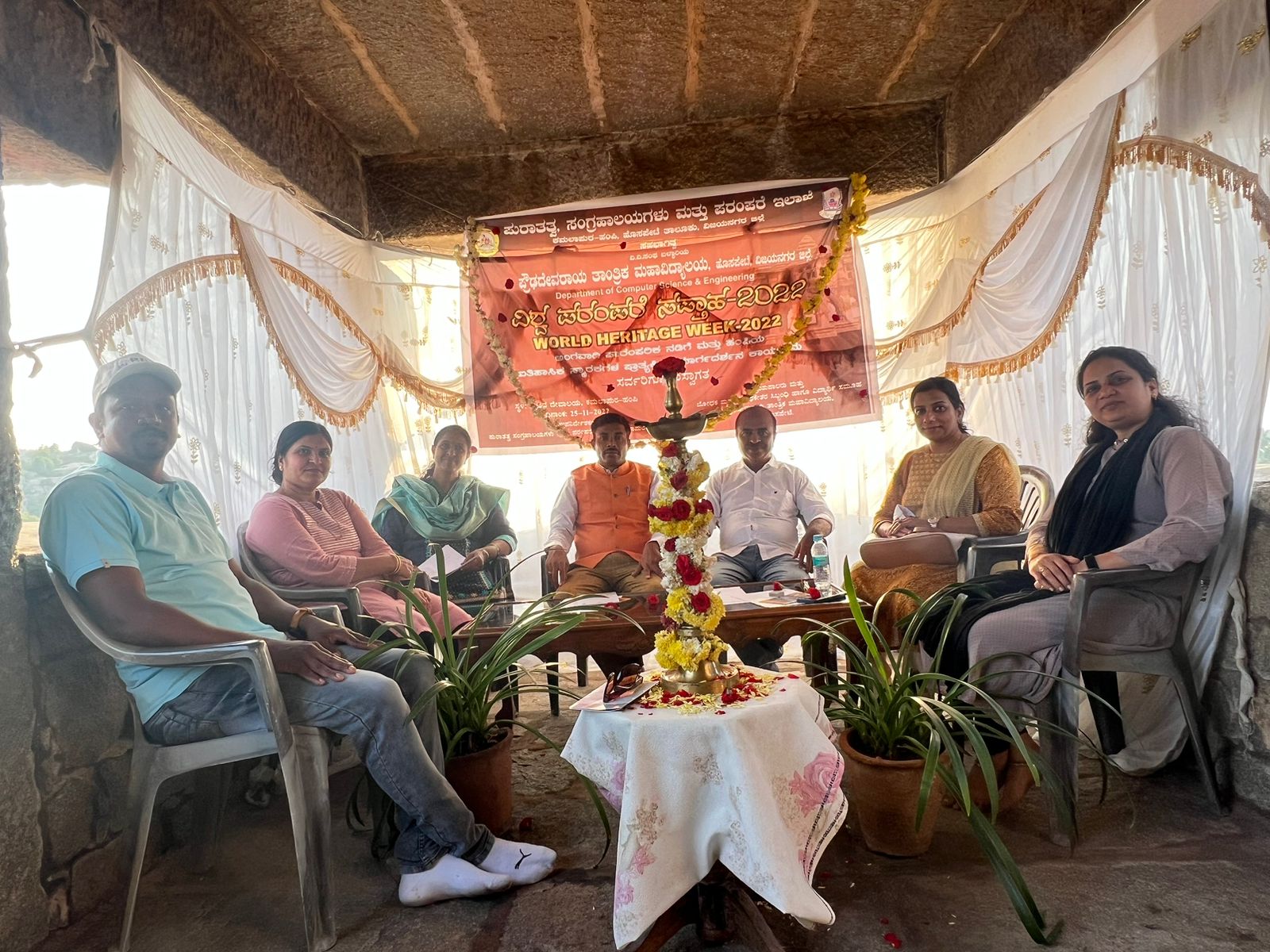module 2- HERITAGE WALK AND CRAFTS CORNER
- Get link
- X
- Other Apps
HERITAGE WALK AND CRAFTS CORNER
Conducted on: November 25th 2022
Gulded by Mrs. Vasanthamma
MODULE 2:
HERITAGE WALK AND CRAFTS CORNER
A heritage walk is a guided tour of a particular area that focuses on the history and culture of a region. It is an excellent way to explore the unique architectural, artistic, and cultural heritage of a place and learn about the history and traditions behind it. In the case of the student tour organized by PdIT College Hospet, the heritage walk likely included a visit to historical sites, monuments, and buildings of significance to the region.
We visited hampi on 25th November 2022. Seventy students and five staff members participated in this heritage walk.
Our collage bus was arranged for transportation. We started the journey morning 7am towards hampi . hampi is a ancient village in the South India state of Karnataka. That dates from the 1336AD to the 20th century. We visited virupaksha temple at morning around 9am and took blessing of god.
A heritage walk in Hampi is a unique experience that takes you on a journey through time, exploring the remnants of an ancient civilization that once thrived in the region. Here are some of the highlights of a heritage walk in Hampi:
The Virupaksha Temple: This temple is dedicated to Lord Shiva and is one of the oldest and most important temples in Hampi. It is believed to have been built in the 7th century AD and is still in use today.
The Hampi Bazaar: This was once a bustling marketplace in the heart of the city. Today, it is a popular tourist spot where you can shop for souvenirs and handicrafts.
The Lotus Mahal: This is a beautiful palace that was built in the 16th century. It gets its name from the lotus-shaped dome on its top. The palace was used by the royal family for entertainment and relaxation.
The Hazara Rama Temple: This temple is dedicated to Lord Rama and is known for its exquisite carvings. It is believed to have been built in the 15th century and was used by the royal family for worship.
The Elephant Stables: These are a set of 11 domed chambers that were once used to house the royal elephants. They are a fine example of the Vijayanagara style of architecture.
The Queen's Bath: This is a beautiful bathing complex that was built for the royal family. It has a central pool surrounded by verandas and balconies.
The Vittala Temple: This temple is considered to be the crown jewel of Hampi. It is known for its stunning stone chariot and musical pillars. The temple was built in the 16th century and is a masterpiece of the Vijayanagara style ofarchitecture.

A heritage walk in Hampi is not just about exploring ancient ruins and admiring beautiful architecture. It is also an opportunity to learn about the culture and way of life of the people who lived in the region centuries ago. The walk will give you a glimpse into the art, religion, and customs of the Vijayanagara Empire, and help you understand the legacy that they left behind
The Elephant Caves are a UNESCO World Heritage Site located on Elephanta Island in Mumbai, India. The caves date back to the 5th century and are famous for their intricate rock-cut cave temples and sculptures depicting Hindu mythology.
Benifits of heritage walk:
The heritage walk in Hampi was an excellent opportunity for the students and teachers of PDIT to learn about the rich cultural heritage and history of India. It helped in promoting a sense of pride and connection with the past and instilled a sense of responsibility towards preserving and protecting historical sites.
The heritage walk also helped in promoting tourism and generating revenue for the local community. Hampi is a popular tourist destination and attracts visitors from all over the world. The heritage walk helped in showcasing the beauty and grandeur of the Vijayanagara Empire and contributed to promoting the cultural heritage of India.
In conclusion, a heritage walk in Hampi is an unforgettable experience that will take you on a journey through time. It is a chance to explore an ancient civilization that has left an indelible mark on Indian history and culture. So if you ever find yourself in Hampi, make sure you take the time to go on a heritage walk and discover the magic of this incredible World Heritage Site
- Get link
- X
- Other Apps



.jpeg)








Comments